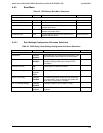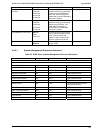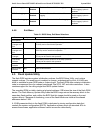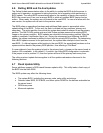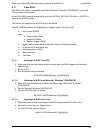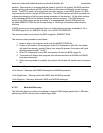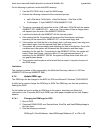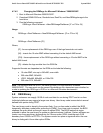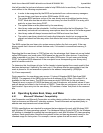
Intel® Server Board SE7320SP2 & Intel Server Board SE7525GP2 TPS System BIOS
Revision 2.0
91
4.6 Rolling BIOS and On-line Updates
The Online Update nomenclature refers to the ability to update the BIOS while the server is
online and in operation, as opposed to taking the server out of operation while performing a
BIOS update. The rolling BIOS nomenclature refers to the capability of having two copies of
BIOS: the current one in use, and a second BIOS to which an updated BIOS version can be
written. When ready, the system can roll forward to the new BIOS. In case of a failure with the
new version, the system can roll back to the previous version.
The BIOS relies on specialized hardware and additional flash space to accomplish online
update/rolling of the BIOS. To this end, the flash is divided into two partitions, primary and
secondary. The active partition from which the system boots shall be referred to as the primary
partition. The AMI FLASH update suite and Intel Online updates preserve the existing BIOS
image on the primary partition. BIOS updates are diverted to the secondary partition. After the
update is complete, a notification flag is set. During the subsequent boot following the BIOS
update, the system continues to attempt to boot from the primary BIOS partition. On determining
that a BIOS update occurred in the previous boot, the system then attempts to boot from the
new BIOS. If a failure happens while booting to the new BIOS, the specialized hardware on the
system switches back to the primary BIOS partition, thus affecting a “Roll Back”.
If a user wishes to force the system to boot to the primary bank, a jumper on the server board at
location J29 is available. In the default 1-2 position, the rolling BIOS configuration is automatic.
If the jumper is set to position 2-3, then the system will boot to the primary bank every time.
The rolling one-boot update feature applies to all the update mechanisms discussed in the
following sections.
4.7 Flash Update Utility
Server platforms support a DOS-based firmware update utility. This utility loads a fresh copy of
the BIOS into the flash ROM.
The BIOS update may affect the following items:
• The system BIOS, including the recovery code, setup utility and strings.
• Onboard video BIOS, SCSI BIOS, and other option ROMS for the devices embedded on
the server board.
• OEM binary area.
• Microcode updates.




